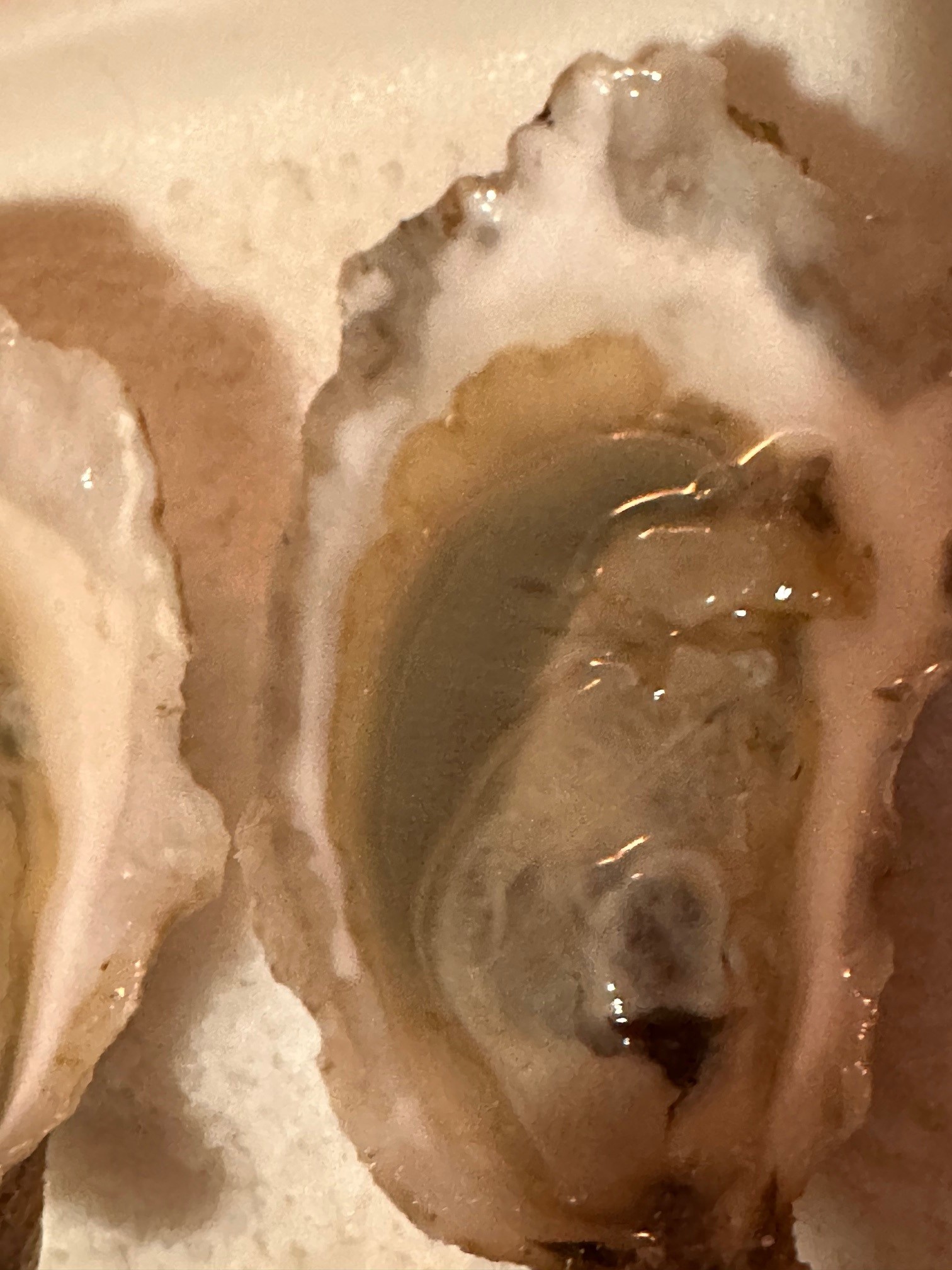And it’s a good thing! Green gill oysters are prized in the oyster community. In the Carolinas and Northern France, green gill oysters are a seasonal, cherished crop and a product of the saying “You are what you eat!” The phytoplankton, Haslea ostrearia, is the typical culprit, and their distribution is measured by direct observation from plankton tows or the occurrence of green-gilled oysters. The exact distribution is unknown, but there are reports of H. ostrearia throughout the Atlantic, Pacific, and Indian oceans. Haslea ostrearia is a beautiful pennate diatom that contains a water-soluble blue pigment known as marennine (More Here). Marennine’s production is stimulated by long photoperiods, blue light, and high light/low cloud weather. It can also be released into the water and into the flesh of organisms (typically oysters) that consume them.

Pensacola Bay, and surrounding areas, had a pretty mild fall in terms of rainfall, and the bays have turned a beautiful green-blue hue as the bays have risen in salinity and phytoplankton typically found in the Gulf of Mexico were able to survive. Brandon Smith, owner of Grayson Bay Oyster Company, was out working his farm January 7th, 2024, and sent a text to me saying “take note of the green gills,” and I was very shocked and happy to see actual, green-gilled oysters in our local waterways. He graciously harvested a few dozen to examine (and let me taste test), and I was able to confirm the presence of green gills in the oysters. After further research on H. ostrearia, it seems as though the pennate diatom made it into our bays and is the culprit of this wonderful surprise.

When I shucked my graciously donated oysters from Grayson Bay, I was reminiscing on the first time I came across green-gilled oysters. The first batch of green gill oysters I ate came from an oyster farm in North Carolina called N. Sea Oyster Company. Their green-gilled beauties “Divine Pines” were requested by a wedding I was catering for, and I was able to slurp down one to get talking and tasting notes. The seasonal Divine Pines offered a sweet yet salty taste and became one of my favorite out-of-area oysters to serve at events and to personally consume. While beautiful, the green-gilled oysters are usually only found in the fall/winter months. These green-gilled Grayson Bays were very comparable and offered a salty yet very sweet and minerally finish. The H. ostrearia is responsible for not only the green gills, but the sweet tasting notes, and I highly recommend adding any green-gilled oyster to your fall/winter raw bar selection.
References:
Turpin, Vincent & Robert, J-M & Philippe, Goulletquer & Massé, Guillaume & Rosa, Philippe. (2008). Oyster greening by outdoor mass culture of the diatom Haslea ostrearia Simonsen in enriched seawater. Aquaculture Research. 32. 801 – 809.
- Bring Some Wild Game To Your Holiday Dinner - December 15, 2025
- Aquaculture in the Southern United States: Part 5 – North and South Carolina - December 8, 2025
- Aquaculture in the Southern United States: Part 4-Louisiana & Mississippi - October 29, 2025
